Hazard pictograms or symbols are used for workplace hazard warning purposes. Actually, hazard pictograms alert users about the dangers of hazardous chemicals. Hazard pictograms are also known as GHS pictogram.
A hazard pictogram consists of a graphical symbol that also includes a warning sign. These pictograms are in a diamond shape with white background and red borders.
Table of Contents
What is HCS?
HCS stands for hazard communication standard. Since 2015 the hazard communication standard has required labels to alert users of chemical hazards on the job. Everyone becomes familiar with these symbols and takes appropriate safety precautions.
What is GHS?
The hazard communication standard (HCS) is now aligned with the globally harmonized system of classification and labeling of chemicals (GHS).
Hazard pictogram types:
- Health hazards pictogram.
- Flame pictogram.
- Exclamation mark pictogram.
- Gas cylinder pictogram.
- Corrosion pictogram.
- Exploding bomb pictogram.
- Flame over circle pictogram.
- Skull and cross bones pictogram.
- Environment pictogram.
Health Hazard Pictogram
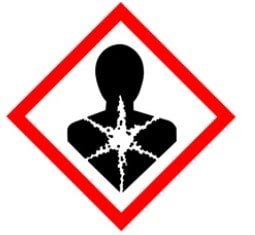
The health hazard pictogram has six-pointed stars over the chest. This pictogram indicates that these hazardous chemicals can cause some health issues.
- Carcinogen (It may cause cancer).
- Mutagenicity (It may cause genetic defects).
- Reproductive Toxicity ( It may damage fertility).
- Respiratory Sensitizer (It may cause respiratory irritation).
- Target Organ Toxicity (It may damage body organs).
- Aspiration Toxicity ( It may fatal if it enters the airways).
Flame Pictogram
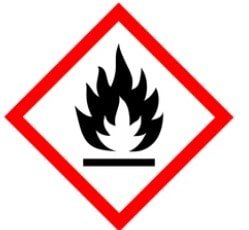
- Flammables.
- Pyrophoric.
- Self-Heating.
- Emits Flammable Gas.
- Self-Reactive.
- Organic Peroxides.
Exclamation Mark Pictogram
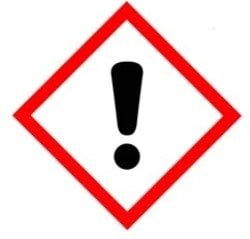
- Skin and eye Irritants.
- Skin Sensitizer.
- Acute Toxicity (harmful).
- Narcotic Effects.
- Respiratory Irritant.
- Hazardous to Ozone Layer.
Gas Cylinder Pictogram
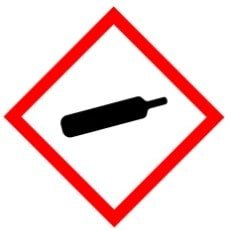
- Gases Under Pressure.
Corrosion Pictogram
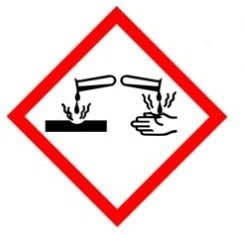
- Skin Corrosion/ Burns.
- Eye Damage.
- Corrosive to Metals.
Exploding Bomb Pictogram
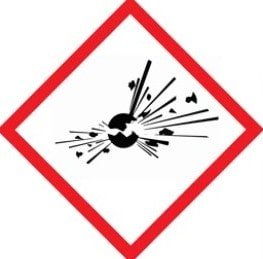
- Explosives.
- Self-Reactive.
- Organic Peroxides.
Flame Over Circle Pictogram
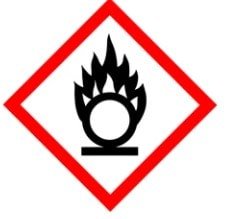
Environment (Non-Mandatory) Pictogram
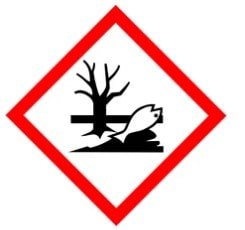
- Aquatic Toxicity
Skull and crossbones Pictogram
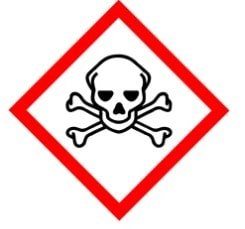
- Acute Toxicity (fatal or toxic).
Ask yourself:
- Am I qualified to handle this hazardous product?
- Do I need help handling or moving the product?
- Do I have the correct personal protective equipment to handle this hazardous product?
Faq’s for hazard pictograms?
What type of hazard do the standard pictograms represent?
1. Health hazard.
2. Physical hazard.
3. Chemical hazard.
4. Environmental hazard, etc.
How many hazard pictograms are there?
There are nine hazard pictograms.
1. Health hazard pictograms.
2. Flame pictogram.
3. Exclamation pictogram.
4. Gas cylinder pictogram.
5. corrosion pictogram.
6. Exploding bomb pictogram.
7. Flame over circle pictogram.
8. Environmental pictogram.
9. skull and cross bones pictograms.
What hazard do the skull and crossbones pictograms are represented?
Skull and crossbones pictograms are indicated hazardous products with this pictogram can cause death or poisoning.
Related posts:
